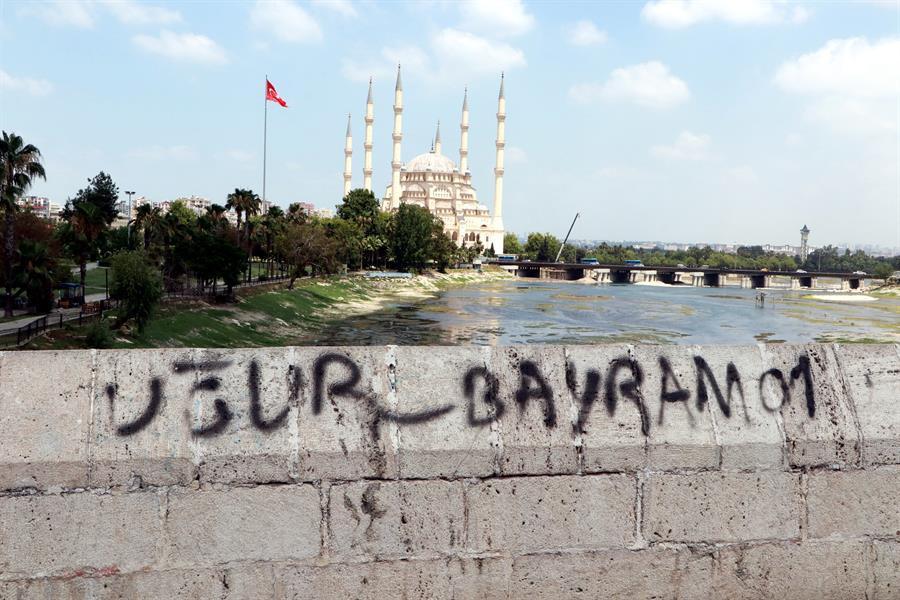
The historic Taşköprü Bridge in the southern province of Adana has been painted with graffiti again.
The bridge, having stood tall for centuries since being commissioned by the Roman Emperor Hadrian in 384, was painted by unidentified people.
The bridge, meaning “stone bridge,” had been painted with graffiti months ago, too. But the Adana Metropolitan Municipality had removed the images after meticulous efforts with high pressure water following locals’ complaints.
Noting that Taşköprü is the historical symbol of Adana, one local of Adana named Şeyda Çeviren (56), stated that these people who damaged the 16-century bridge do not respect history.
Taşköprü, located over the Seyhan River, is one of the oldest bridges in the world that is still in use.
The General Directorate of Highways had restored the bridge in 2006 and opened it to bicycles and pedestrians, as well as social and cultural events, while banning the passage of vehicles.
The bridge, which originally had 21 arches, now has 14 arches after seven of its arches were left submerged during rehabilitation works of the Seyhan River.
It was a key link in ancient trade routes from the Mediterranean Sea to Anatolia and Persia. Among the names used for the bridge during its history are the Saros Bridge, the Bridge of Justinian, the al-Walid Bridge and Taşköprü.